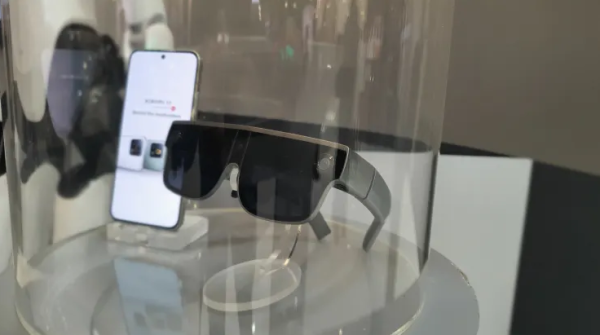Xiaomi Debuts Prototype Augmented Reality Glasses
Xiaomi revealed a prototype of augmented reality glasses at the Mobile World Congress 2023. The Chinese technology company is the latest looking to pivot into the XR niche and sell more tech products beyond traditional computing hardware. Apple is also expected to release an AR/VR headset later in the year.
The Xiaomi device is christened Xiaomi Wireless AR Glass Discovery Edition. The company says this is merely a concept technology and that it is not taking it to the market yet. By opting to announce the prototype at the Mobile World Congress in Barcelona, the biggest mobile industry trade show, the company is signaling its ambition to develop products for the XR industry.
The augmented reality industry is already shaping up into an ultra-competitive one with players such as Microsoft with the HoloLens and the Google Glass Enterprise. In the future, giant players in the tech industry such as Meta and Apple will also launch AR hardware.

The leading tech players such as Apple, Microsoft, and Google have shown a keen interest in augmented reality which they see as the technological frontier that provides users with new mixed reality experiences and which will, perhaps, usher in a new computing paradigm. It is believed that Augmented Reality will be core to the metaverse experience in the decades to come.
Apple CEO Tim Cook has described augmented reality technology as “profound” and that it will “affect everything”.
Apple is yet to officially acknowledge it is building an augmented reality headset although rumors and leaks about its XR hardware project have floated about for years.
A Bloomberg report last year stated that the Apple headset would be unveiled in spring with consumer deliveries set to begin in the fall of this year.
The tech industry generally regards AR smart glasses as the next major computing frontier after smartphones.
Gesture Control
In its presentation, the Chinese technology giant said the AR glasses prototype is lightweight and can wirelessly connect to a smartphone. According to Xiaomi, the device can also provide a “retina-level display” that will enable users to clearly see virtual objects just as they would real-world objects.
Xiaomi said the AR headset features gesture control with which users can perform tasks. To do this, the wearer simply raises their hands in front of the glasses when they are worn and move their fingers and hands in specific ways to perform functions. For instance, the company said users can enter and exit applications by thumb sliding on the index finger. Such functionality could eventually eliminate the need for a user to touch their smartphone.
Xiaomi believes such interactions represent the direction that human-computer interaction will eventually take in the years to come.
The company also said the AR headset will be compatible with its Xiaomi 13 and 13 Pro flagship smartphones that it launched for the global market on Sunday.
Xiaomi wants to tap into revenue sources from other devices. It has been venturing beyond the smartphone market in the past few years, building devices such as electric scooters and televisions.
The AR headset prototype it launched at the MWC23 isn’t a serious product launch and represents more of a “stake in the ground”, with the company sending signals to the industry that it may venture into the market at some point in the future.
https://virtualrealitytimes.com/2023/03/01/xiaomi-debuts-prototype-augmented-reality-glasses/https://virtualrealitytimes.com/wp-content/uploads/2023/03/Xiaomi-AR-Glass-Discovery-Edition-at-Mobile-World-Congress-2023-600x335.pnghttps://virtualrealitytimes.com/wp-content/uploads/2023/03/Xiaomi-AR-Glass-Discovery-Edition-at-Mobile-World-Congress-2023-150x90.pngBusinessXiaomi revealed a prototype of augmented reality glasses at the Mobile World Congress 2023. The Chinese technology company is the latest looking to pivot into the XR niche and sell more tech products beyond traditional computing hardware. Apple is also expected to release an AR/VR headset later in the...Rob GrantRob Grant[email protected]AuthorVirtual Reality Times - Metaverse & VR
